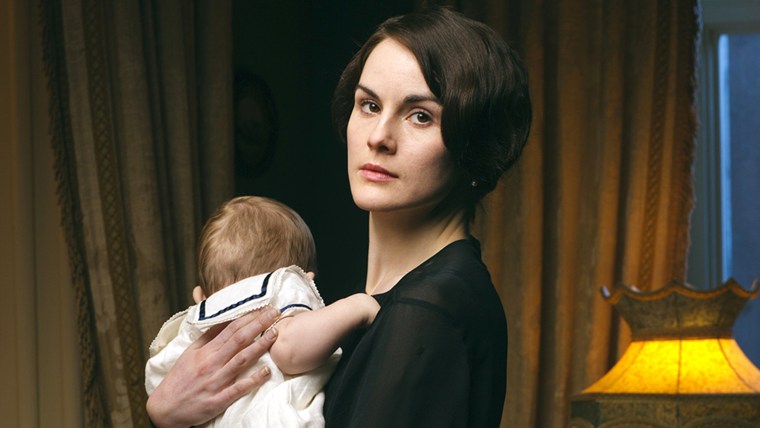When fans of “Downton Abbey” last saw Lady Mary Crawley, she had given birth to a son and her husband, Matthew, had died in a car accident. Six months later, Lady Mary haunts the abbey, dressed in black, staring listlessly and ignoring her son.
“Take an interest in something,” her brother-in-law Tom Branson pleads.
“I am interested in George,” Mary says of her six-month-old baby boy.
“Are you?” Tom says.
“I will be.”
Lady Mary’s lack of interest in Downton's infant heir isn’t simply a portrayal of wife in mourning; her character is likely suffering from postpartum depression. And given the way depressed new mums were treated in the 1920s, lucky for her no one in Downton sent for Dr. Clarkson to “help” with her mental distress.
The good doctor might have tied Mary to the bed, kept her away from her baby, prescribed delirious amounts of opium, and made her take tepid baths with water about 96 degrees, explains Jennifer Hahn-Holbrook, an assistant professor of psychology at Chapman University. Though even these treatments sound like an improvement from the popular cure for postpartum depression until the 1900s — bloodletting.
In reality, one in five women experiences postpartum depression and almost every new mom feels the baby blues, Hahn-Holbrook says. When it lasts for more than two weeks, women need to seek help. “Postpartum depression looks a lot like regular depression,” says Hahn-Holbrook.
“Women who have postpartum depression really can’t function. They can’t take care of themselves, much less their baby,” says Dr. Vivien Burt, professor of psychiatry and director of the women’s life center at UCLA. “[There is a] tremendous amount of guilt and loss of confidence [about] performing anything, much less being a mom.”
Mary seems no different, confessing to her grandmother, the Dowager Countess: “The truth is, I don’t think I am going to be a very good mother.”
Experts know that biological factors and stress can lead to postpartum depression. After giving birth, estrogen levels drop about 200 to 300 percent — lower than during menopause, says Burt. This sudden plummeting of hormones combined with stressors like financial problems, an unsupportive partner (or in Mary's case, a deceased one), or lack of sleep create the perfect conditions for post-baby depression.
And Mary lives with a lot of strain. In addition to losing her husband, her father Lord Grantham treats like her a simple-minded invalid, a common attitude towards depressed women in the early 20th century.
While Lord Grantham believes they should simply leave Mary alone, the Dowager Countess and her brother-in-law rightly encourage Mary to engage in something. However, most women experiencing postpartum depression need more than a can-do attitude to shake the melancholy. Experts agree that women should seek medical help if their depression lasts more than two weeks.
“Most women during that time probably didn’t feel comfortable [asking for help] if they were feeling postpartum depression,” says Hahn-Holbrook. Doctors believed that if a woman suffered from postpartum depression she was “a weak person.”
